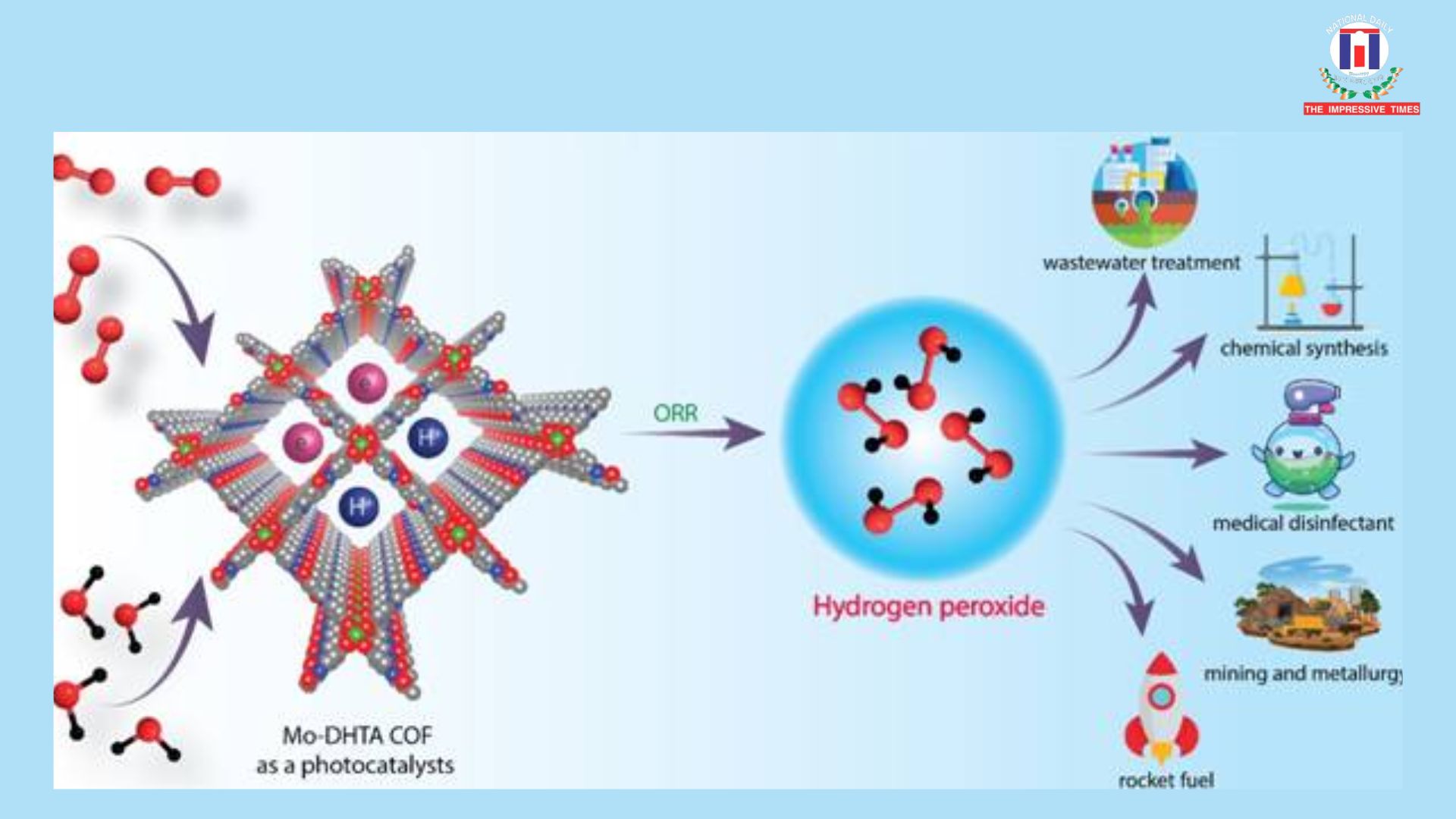In a major breakthrough in sustainable chemical technology, researchers at the S. N. Bose Centre for Basic Sciences (SNBCBS), under the Department of Science and Technology (DST), have developed a revolutionary method to synthesize hydrogen peroxide (H₂O₂) directly from water and sunlight. Using a novel material called Mo-DHTA COF—a dimolybdenum paddlewheel-embedded covalent organic framework (COF)—scientists have opened a new chapter in green chemistry with potential industrial applications ranging from pharmaceuticals to environmental remediation.
Hydrogen peroxide is a widely used eco-friendly disinfectant and oxidizing agent. It plays a crucial role in sterilization, wastewater treatment, chemical synthesis, and even in powering fuel cells. Unlike conventional methods of H₂O₂ production that are energy-intensive, costly, and environmentally hazardous, this photocatalytic method relies on visible light and water—making it clean, scalable, and highly sustainable.
Conventional photocatalysts like metal oxides and carbon nitrides suffer from low stability and wide band gaps, limiting their effectiveness. However, COFs, known for their high surface area, tunable porosity, and photostability, provide a better platform for photocatalysis. By embedding metal centers—in this case, dimolybdenum units—within the COFs, the team created a robust framework capable of capturing light and binding oxygen molecules efficiently.
The material works by absorbing sunlight, which generates excitons—electron-hole pairs that drive the chemical reaction. The electrons reduce oxygen to form superoxide radicals, which further react to generate H₂O₂. The Mo-DHTA COF integrates α-hydroquinone linkers, which help in the reduction process and oxygen binding, increasing the catalyst’s efficiency.
This innovation has demonstrated remarkable photocatalytic efficiency not only in ethanol and benzyl alcohol media but also in pure water—an important feature for real-world applications. In addition to high yields of hydrogen peroxide, the material offers excellent structural stability and recyclability, making it suitable for long-term industrial use.
Published in the prestigious journal Small, the study involved a team of researchers including Bidhan Kumbhakar, Avanti Chakraborty, Uttam Pal, Gaurav Jhaa, Sukanta Mondal, Abhik Banerjee, Tanusri Saha-Dasgupta, and Pradip Pachfule.
This development could transform pharmaceutical production, enable green sterilization in healthcare, improve water treatment technologies, and even advance clean energy systems through applications like CO₂ reduction and water splitting. Future research will aim to optimize the design of such metal-embedded COFs and scale up their production for industrial deployment.
The success of Mo-DHTA COF highlights India’s growing leadership in green chemistry and sustainable innovation, showcasing how sunlight and water can be harnessed to power the next generation of eco-friendly chemical manufacturing

















































No Comments: